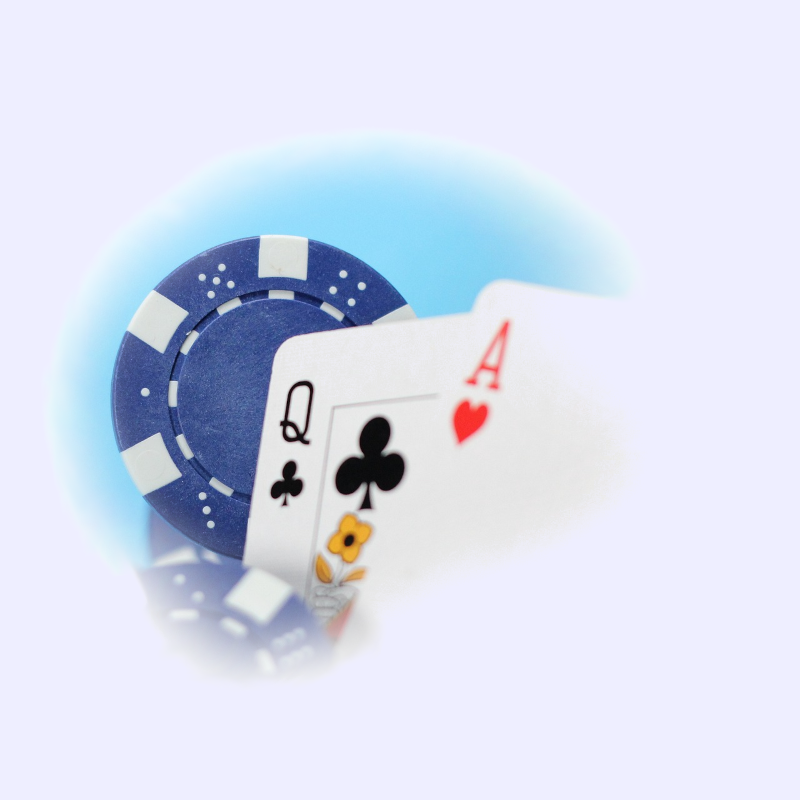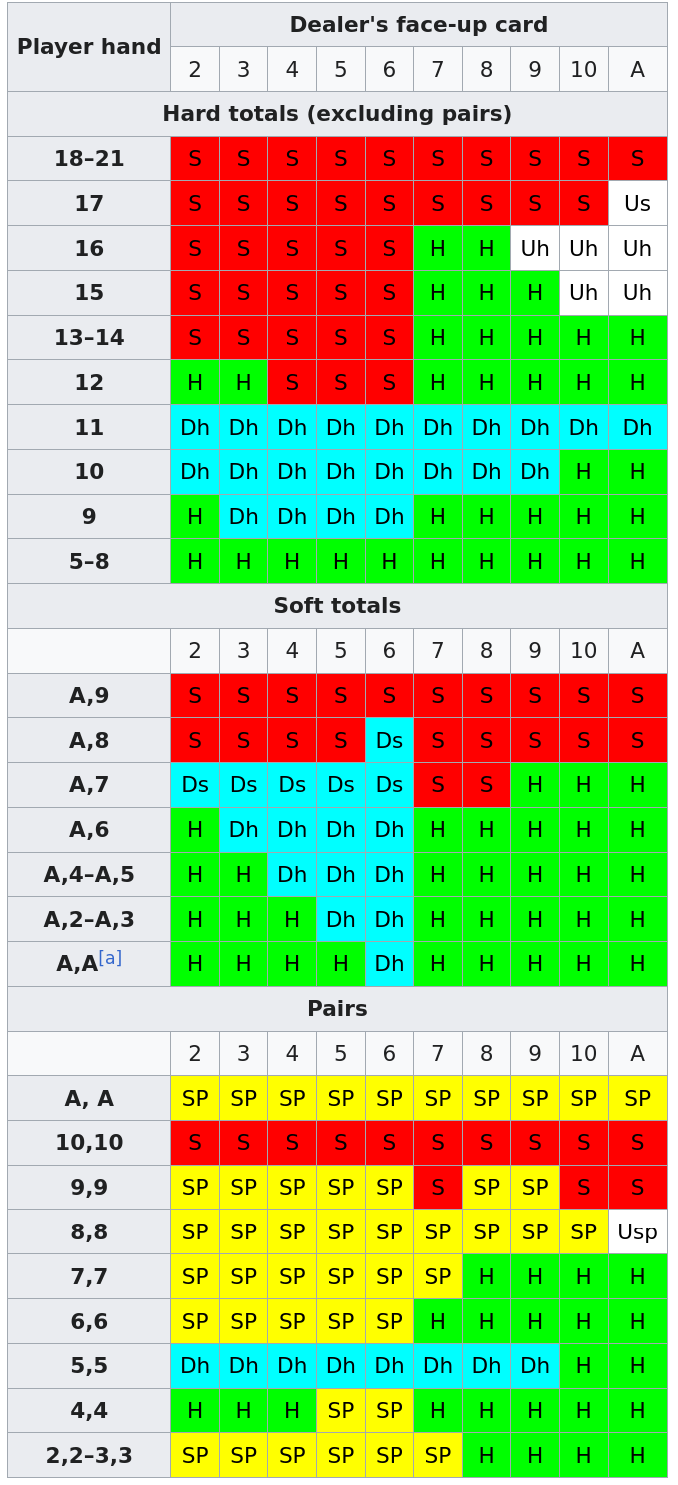
Blackjack, also known as Twenty-One, is a popular card game played in casinos. The objective is to beat the dealer by having a hand value closer to 21 without exceeding it.
Number Cards (2-10): Face value Face Cards (Jack, Queen, King): 10 points Aces: Can be 1 or 11 points
Players place their bets. Each player and the dealer receive two cards. Players' cards are face up; the dealer has one card face up and one face down.
Players can choose to: Hit: Take an additional card. Stand: Keep their current hand. Double Down: Double the bet and receive one more card. Split: If the first two cards are of the same value, split them into two hands. Surrender: Forfeit half the bet and end the hand.
If a player's hand exceeds 21, they "bust" and lose the bet. If the dealer busts, all remaining players win. A "Blackjack" (an Ace and a 10-point card) beats any other hand. Winning hands are typically paid 1:1, while a Blackjack pays 3:2.
The dealer must hit until reaching a total of 17 or higher. If the dealer has an Ace showing, players can take "insurance" against the dealer having a Blackjack.
Familiarize yourself with basic strategy charts to know when to hit, stand, double down, or split. Understanding the house edge can help you make informed decisions while playing. These rules provide a foundation for playing Blackjack, making it accessible and enjoyable for both beginners and experienced players.
Like all casino games, the house has an edge. If you want to even stand a chance of leaving the Blackjack table with more than you started with, you need to learn Blackjack strategy. Take time to try and memorize the Blackjack strategy chart below, and with practice, you can become an expert player!


Playing perfect Blackjack strategy according to the chart isn't enough to beat the casino's edge. Card counting takes Blackjack strategy to the next level, allowing players to increase their odds of winning.
Card counting is an advanced stategy used by players to try and gain an edge against the house. Card counting is based on the proven theory that the player has a better chance of winning the hand if there are more high cards left in the deck.
High cards: 10,J,Q,K,A (-1)
Neutral cards: 7,8,9 (0)
Low cards: 2,3,4,5,6 (+1)
For every low card dealt, you make a mental '+1' to the total in your head and a '-1' whenever a high card is dealt. When the total count goes positive enough, you increase your bet and when the count goes negative, adjust your bet lower.
Multi-deck shoes obviously make it much more difficult to count cards, and add to that the automatic shufflers and card readers now employed by the casinos, card counting has become more difficult than ever.
Card counting isn't easy, but it's another strategy to increase your odds of beating the dealer on the Blackjack table.
Blackjack, originally known as "Vingt-et-Un" or "Twenty-One," likely originated in French casinos around the 1700s. The game evolved in America during the 19th century, where it was renamed "blackjack" due to a special payout for a hand consisting of an ace and a black jack, and it has since become one of the most popular casino games worldwide.
Blackjack, also known as "Twenty-One," has a rich history that dates back to the 16th century. The game is believed to have originated in French casinos around 1700, where it was known as "Vingt-et-Un," meaning "Twenty-One." This game was popular among the French elite, including King Louis XV and Napoleon Bonaparte.
Spanish Influence: A similar game called "Veintiuno" was played in Spain, and there are theories suggesting that the Romans may have played a precursor using wooden blocks.
Evolution in America: French colonists brought the game to America in the early 1800s, where it evolved into the version we know today. By the 1820s, it was being played in legalized gambling halls in New Orleans.
The name "Blackjack" emerged in the early 20th century. To attract players, casinos offered a special payout for a hand consisting of an Ace of Spades and a black Jack (either the Jack of Clubs or Spades). Although this bonus was later removed, the name remained.
Legalization: In 1931, Nevada legalized gambling, which helped standardize the rules of blackjack.
Card Counting: The game gained notoriety in the 1960s when players began using card counting strategies to gain an edge over the house. This led to casinos implementing measures to counteract these techniques.
Blackjack is now one of the most popular casino games worldwide, played both in physical casinos and online. Its combination of luck and skill continues to attract players, making it a staple in the gambling community.